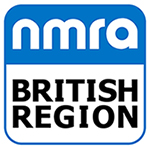In the January 2020 Roundhouse, Jonathan Small, Vice President, made a comment about attracting non-US modellers to the Achievement Program scheme. In my time as Contest Chair and also as AP Assistant, I have in fact seen a small number of non-American prototypes; mostly British, but also a few others – Cuban, Japanese, for example. Peter Bowen has run articles in Roundhouse about railways that are neither British nor American. Which poses the question, “who is the NMRA BR for”, who are the intended, expected members?
In the USA, the NMRA is the overall governing body for the hobby of model railways. It has a proud history of promoting the hobby. It does that in a number of ways, such as setting standards and encouraging manufacturers to work within those standards. It supports regions in organising their conventions. It’s a large part of organising those National conventions that are held in the USA or Canada – which is all but two of them – 1971 and 2022 were not or will not be in North America. There’s the Achievement Program, which is aimed at upskilling the membership and enabling them to get even more from the hobby. The AP also has its offshoots in convention contests for those people with a competitive streak.
The NMRA has a variety of services such as Member Aid, the library and services around that, and a variety of other programs; many with regional offshoots as well as being offered centrally. It operates through and promotes regional organisations and below that, divisions and individual clubs, all of which helps to make what might appear to be a remote bureaucracy more available and more accessible, and which helps to bind the entire membership together. This binding together means that when we’re travelling, we can find members and clubs to visit and enjoy model railroading with.
In short, the NMRA in the USA promotes the hobby of modelling railways and trains, building and operating them.
There’s nothing like this in the UK. For sure, there are UK specialist societies like the O Gauge Guild, the 009 society, the EM and Scalefour societies, and these too offer a collection of member services. But none of them is an across-the-board organisation, and none of them try to take the hobby outside of itself, or even outside their own special interest. Indeed, in the UK, the NMRA British Region sees itself – and is seen, when it is seen at all – as another specialised society, promoting the modelling of North American railroads and railways, and only North American railroads and railways.
I think this is wrong.
We, the NMRA British Region, should be taking a lead, just as the NMRA in the US does, and be seen to promote the hobby across the board and explain just what the NMRA can and has done for railway modellers worldwide. While many of us NMRA British Region members do indeed have US and North American railways as our prime or only modelling interest, recognise that some of our members model non-US prototypes or are involved with non-US layouts, They know that the only difference is the models; the modelling skills and expertise that we gain is transferable across prototypes.
In our US modelling, only the trains and structures, and the operating regimes really differ from UK modelling. Scenery is basically the same, as are the electrics, the DCC, the tracklaying process whether it’s flex or handlaid. There are many more aspects of building and operating layouts that are the same regardless of prototype. We know we have much to offer. As Jonathan says, the AP is something that while being unique to the NMRA, should and can represent value to people who are currently not NMRA members and who are almost certainly unaware of the AP.
Many of us, too, have spent many happy hours operating a US-theme layout with friends, using all sorts of operating schemes. I’ve operated with dispatcher and car cards, TTTO (timetable and train orders), switch lists and on fully signalled layouts as well as those run in a relaxed one-engine-in-steam mode. But I’ve only ever done this on North American layouts. I’ve never seen a UK prototype layout that operates using any sort of scheme other than a timetable, and I’ve certainly never seen one where the freight operations had the type of prototypical basis that a car-card regime generates.
I’ve taken UK modellers to US layouts for operating sessions, and while it is true to say that a couple of them hated it as they just wanted to watch the trains go by, the bulk of them enjoyed it and one or two have seen it as a real eye-opener.
We should do more of that.
Indeed, I’ve heard it said that UK modellers model stations, while US modellers model railway operations. Most UK layouts, even those in steam days, model passenger operations and hardly touch on freight, let alone show how the railway handled freight – which was, right up until around 1970, the predominant traffic carried, and I’d suggest much more interesting to model than passenger operations. When did you last see a UK model railway that wasn’t centred around passenger traffic, and when did you last see a US prototype layout that majored on it? Indeed, when did you last see a US prototype layout with any more passenger facilities than a small depot building?
Can we, should we, show a lead in the design and operation of layouts that better reflect what the railways of the past actually did?
So, then is the NMRA in the UK about modelling US and North American prototypes, or is it really about the future of our hobby in all its forms?
That decision is in your hands.
Written by Mick Moignard 2020


